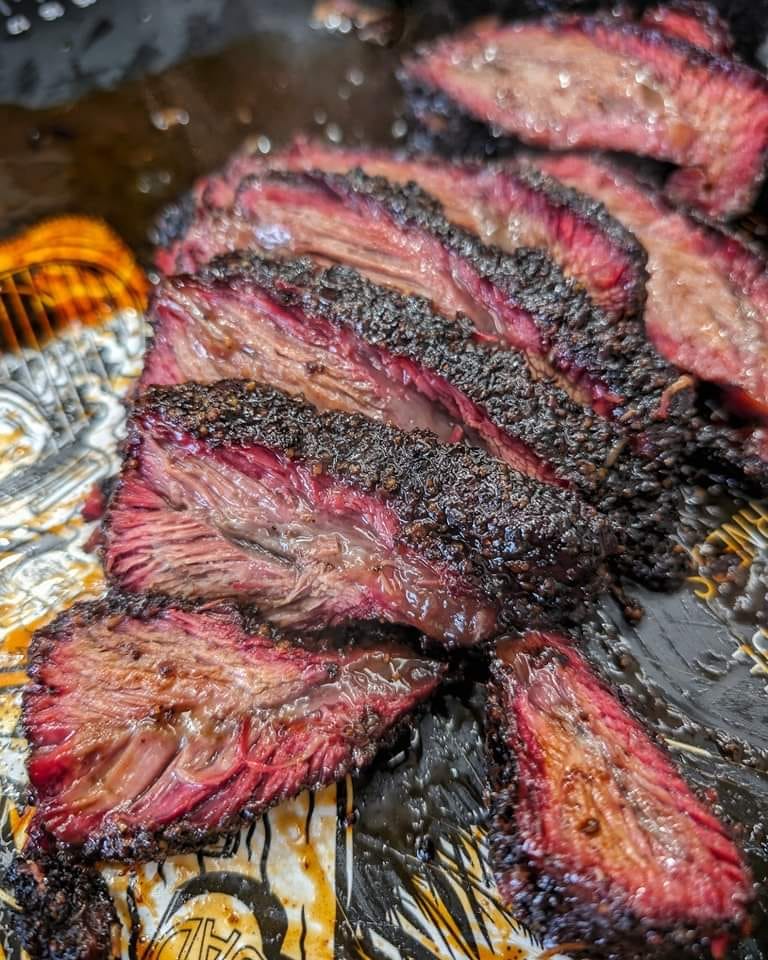Slow-cooked cuts like brisket, pork shoulder, and beef cheeks are a testament to the art of patience and culinary mastery. Here’s a mouthwatering description of these slow-cooked delights:
**Brisket:**
Imagine a cut of beef that’s been lovingly rubbed with a blend of spices—perhaps a mix of smoked paprika, garlic powder, and cracked black pepper. Slow-cooked to perfection over hours,
the brisket transforms from tough and sinewy to melt-in-your-mouth tender. The exterior boasts a beautifully caramelized bark, offering a contrast of crispy texture against the velvety, succulent meat within.
**Pork Shoulder:**
Picture a pork shoulder, its surface glistening with a savory rub of sea salt, brown sugar, and aromatic herbs like thyme and rosemary. Slow-roasted for hours,
the pork shoulder becomes a masterpiece of moist, fall-apart goodness. It’s comfort food at its finest—a dish that warms the soul with every savory mouthful.
**Beef Cheeks:**
Imagine beef cheeks, marinated in a rich red wine sauce with shallots, garlic, and bay leaves. Braised gently over low heat, the beef cheeks become fork-tender, soaking up the flavors of the braising liquid until they practically melt on your tongue.
The meat is luxuriously rich and succulent, with a depth of flavor that reflects the slow infusion of wine and aromatics. Each bite offers a velvety texture and a complexity that speaks of hours spent simmering to perfection. Served atop a bed of creamy mashed potatoes or alongside roasted root vegetables, beef cheeks are a culinary delight that satisfies both the palate and the senses.
These slow-cooked cuts—brisket, pork shoulder, and beef cheeks—represent the pinnacle of comfort and flavor in the realm of slow cooking. Whether enjoyed as a centerpiece for a festive gathering or as a comforting meal on a quiet evening,
they embody the art of transforming tough cuts of meat into tender, flavorful dishes that leave a lasting impression of warmth and satisfaction.
Barbecue presents a funny approach to cooking, particularly when focusing on low and slow cuts like Brisket, Pork Shoulder, and Beef Cheeks for example.
Even when using the same type of meat repeatedly, one can achieve varying results in terms of cooking duration, texture, and flavor. Unlike conventional recipes, barbecue often relies on intuition rather than strict guidelines.
Knowing when to adjust the cooking pace, whether to wrap the meat, when to rest it, or how to identify tenderness are key skills in mastering barbecue.
While certain aspects of barbecue, such as The Stall, Spritzing, or internal finished temperature, receive significant attention, it’s essential to focus on more practical elements.
Understanding how to manipulate cooking times by adjusting the BBQ temperature, mastering fire control and a clean burn, and texture and tenderness are key.
Rather than battling with the fire throughout the day, adapting your cooking method based on the BBQ’s behavior is a very common practice of mine.
Although internal temperatures provide a general reference point for low and slow cuts, true expertise comes from developing a sense of the meat’s texture and tenderness through experience, using your hands to feel the meat.
What are some insights you wish you had gained earlier in your Barbecue process?
Slow-cooking tough cuts of meat like brisket, pork shoulder, and beef cheeks can yield incredibly tender and flavorful dishes. Here are some recipes for each of these cuts:
**1. Slow-Cooked Brisket**
Ingredients:
– 3-4 lbs beef brisket
– 2 tablespoons olive oil
– 2 onions, sliced
– 4 cloves garlic, minced
– 1 cup beef broth
– 1 cup red wine (optional)
– 1/4 cup brown sugar
– 1/4 cup soy sauce
– 2 tablespoons Worcestershire sauce
– tablespoon smoked paprika
– tablespoon ground cumin
– 1 teaspoon black pepper
– Salt, to taste
– Fresh thyme or bay leaves (optional)
Instructions:
1. **Prepare the Brisket:** Trim excess fat from the brisket and season generously with salt and pepper.
2. **Sear the Meat:** In a large skillet or Dutch oven, heat olive oil over medium-high heat. Sear the brisket on both sides until browned (about 3-4 minutes per side). Remove and set aside.
3. **Sauté Aromatics:** In the same pot, add the sliced onions and cook until softened (about 5 minutes). Add the garlic and sauté for another minute.
4. **Combine Ingredients:**
Add the beef broth, red wine, brown sugar, soy sauce, Worcestershire sauce, smoked paprika, cumin, and thyme or bay leaves. Stir to combine.
5. **Slow Cook:** Return the brisket to the pot, cover, and cook on low for 8-10 hours, or until fork-tender. Alternatively, you can use a slow cooker on low for the same amount of time.
6. **Serve:** Remove the brisket, slice against the grain, and serve with the cooking juices.

